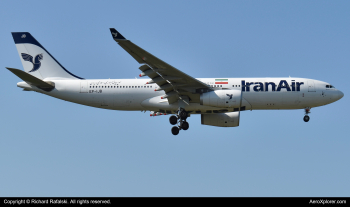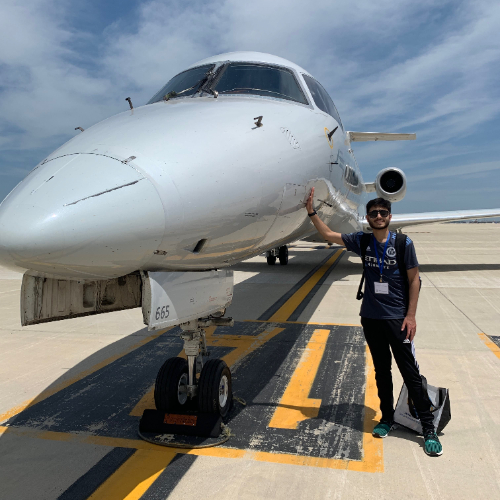Downing a non-combatant civilian airliner is a violation of International Humanitarian Law even during wars. Such a tragedy occurred with Iran Air Flight 655—a passenger flight with 290 people on board—which was shot down by the United States in 1988.
Let's look at the tragic story of Iran Air jetliner.
What Happened on July 3, 1988?
Iran Air Flight 655 fell victim to a fatal misunderstanding by the US Navy amid the peak tension in the backdrop of the eight-year-long Iran-Iraq war. Amid the naval skirmishes between the US and Iran in the Strait of Hormuz—a body of water over where the tragic incident happened—Iran Air Flight 655 took off from Bandar Abbas (Iran) on July 3, 1988.
Iran Air Flight 655 was a twice-weekly scheduled service from Tehran to Dubai via Bandar Abbas.
After a short layover in Bandar Abbas, Flight 655 departed at 10:17 local time with a 27-minute delay.
Tragedy and US Embarrassment Over the Gulf
Flight 655 was assigned to the commercial air corridor "Amber 59", a 20-mile-wide lane on a direct path to Dubai. Because of the short flight, the A300 would climb to 14,000 feet, cruise, and then descend shortly after.
As Flight 655 was airborne, it transmitted "Mode 3", the correct transponder squawk code for civilian aircraft. The pilots maintained radio contact with air traffic control facilities in English.
While the passenger plane was flying over the Persian Gulf, the American missile cruiser USS Vincennes allegedly received a "Mode 2" signal from the A300. This led the Vincennes crew to believe that the airliner was an Iranian F-14 Tomcat diving into attack mode.
However, the Vincennes' Aegis Combat System recorded that the A300 was climbing and that its radio transmitter was squawking the correct "Mode 3" civilian frequency and not the "Mode 2" military one.
All aircraft in the area had to monitor the International Air Distress (IAD) radio frequency, 121.5 MHz. This order came a year after the USS Stark incident when an Iraqi aircraft mistakenly attacked the USS Stark believing it to be hostile.
Reportedly, the Vincennes made 10 attempts to warn Flight 655 with no responses at all. With the A300 not responding yet continuing to move toward the Vincennes, the crew continued to mistake it as a hostile Iranian F-14. So, the U.S. Navy crew commenced the process of engaging the aircraft.
At 10:24:22, just seven minutes after Flight 655 took off, Vincennes fired two SM-2MR surface-to-air missiles at a range of 10 nautical miles (12 miles or 19 kilometers) from the A300. The first missile hit the aircraft 21 seconds later when it was eight nautical miles from Vincennes with the second missile intercepting shortly after.
The A300 disintegrated immediately into three pieces and crashed into the water, killing all 290 people aboard, including 66 infants and children.
Both the cockpit voice recorder and flight data recorder were never found.
Details of Iran Air Flight 655
The unfortunate flight that never reached its destination was captained by 37-year-old Mohsen Rezaian, a veteran pilot with around 7,000 hours of flight time. A 31-year-old First Officer Kamran Teymouri and 33-year-old Flight Engineer Mohammad Reza Amini were also part of the crew.
The aircraft was a six-year-old Airbus A300B2-203 registered EP-IBU.
Flight 655's first leg took it from Tehran Mehrabad (THR) to the southern Iranian port city of Bandar Abbas (BND). Mehrabad was Tehran's main international airport until 2005 when Imam Khomeini International Airport (IKA) opened. Today, Mehrabad Airport only serves domestic flights.
After a short layover in Bandar Abbas, Flight 655 departed at 10:17 local time with a 27-minute delay.
Of 290 onboard, 274 were passengers and 16 were crew members, mostly from Tehran. Among the total, there were 254 Iranians, 13 Emiratis, 10 Indians, six Pakistanis, six Yugoslavs, and one Italian.
The second leg from Bandar Abbas to Dubai was a short jaunt across the Persian Gulf scheduled at just 28 minutes.
US Confirmed Shooting Down After Initial Confusion
Soon after the incident, Pentagon officials initially stated that the Vincennes had shot down an Iranian F-14. A few hours later, they retracted the statement and confirmed Iranian reports that the target was a civilian Airbus A300.
According to the U.S., Vincennes mistakenly identified the A300 as an attacking military fighter and misidentified its flight profile. This was despite the Aegis Combat System recording the A300's flight plan as climbing (not descending to attack).
The same reports maintained that Vincennes unsuccessfully tried to contact the passenger plane 10 times. Seven attempts were made on the military emergency frequency and three on the civilian emergency frequency.
However, the A300 was not equipped to receive military frequencies and the messages on the civilian frequency could have been directed at any aircraft. Probably, there could have been confusion among Flight 655's pilots about whether the warning messages were directed at them.
It was later concluded that Vincennes was 2.5 miles inside Iranian territorial waters at the time of the shootdown, further admitted in a report by Admiral William Fogarty.
The "Fogarty report" as it was called, stated that the Vincennes' tapes confirmed that Flight 655 was on a normal commercial air flight plan profile squawking 6760 on "Mode 3" in a continuous ascent on takeoff from Bandar Abbas.
The report also claimed that Iran was partially at fault for the tragedy by allowing one of their civilian airliners to fly at a relatively low altitude near an area dealing with various hostilities.
Iran Took the Matter to the ICJ
The matter of Flight 655 was taken to the International Court of Justice under the name "the Aerial Incident of July 3, 1988" (Islamic Republic of Iran v. United States of America).
The Iranian government maintained that the shootdown was intentional. It believed that the negligence of the Vincennes' crew amounted to that of an international crime.
Iran was skeptical about the "mistaken identification" claim because Vincennes' Aegis radar as well as the two other nearby US warships tracked the flight as civilian. In addition, Flight 655 was traveling within a recognized international air corridor.
The case was dropped on February 22nd, 1996 after the US agreed to pay reparations. In total, $131.8 million was paid to Iran in settlement with $61.8 million in compensation for the 248 Iranians killed in the shootdown.
The US expressed regret for the loss of human lives but never formally apologized or accepted the mistake. This was despite President Ronald Reagan issuing a written diplomatic note to the Iranian government expressing his regret which he considered an apology.
This article is written in memory of those lost onboard Iran Air Flight 655.
ir Flight 655.
Comments (0)
Add Your Comment
SHARE
TAGS
STORIES Iran Air Flight 655 Iran Air Iran Air A300 flight 655 Iran air 655RECENTLY PUBLISHED
 Learjet Owned By Vince Neil Crashes Into Gulfstream Jet, 1 Fatality Confirmed
On February 10th, around 14:30 local time, a Learjet private jet aircraft crashed into another private jet after landing at Scottsdale Airport (SCF) in Arizona.
NEWS
READ MORE »
Learjet Owned By Vince Neil Crashes Into Gulfstream Jet, 1 Fatality Confirmed
On February 10th, around 14:30 local time, a Learjet private jet aircraft crashed into another private jet after landing at Scottsdale Airport (SCF) in Arizona.
NEWS
READ MORE »
 Seattle Plane Strike 2025: Japan Airlines and Delta Collision Raises Safety Concerns
Seattle-Tacoma International Airport saw a concerning incident on Wednesday morning when a Japan Airlines (JAL) plane clipped a parked Delta Air Lines jet while taxiing. Thankfully, no one was injured, but passengers described the collision as a frightening experience.
NEWS
READ MORE »
Seattle Plane Strike 2025: Japan Airlines and Delta Collision Raises Safety Concerns
Seattle-Tacoma International Airport saw a concerning incident on Wednesday morning when a Japan Airlines (JAL) plane clipped a parked Delta Air Lines jet while taxiing. Thankfully, no one was injured, but passengers described the collision as a frightening experience.
NEWS
READ MORE »
 Ethiopian Airlines Expands Cargo Fleet with New Boeing 777 Freighter
Ethiopian Airlines has expanded its cargo fleet with a brand-new Boeing 777 Freighter, registered as ET-BAB (MSN 68140). The aircraft was delivered directly from Boeing’s factory in Everett, Washington, USA, and landed at Addis Ababa Bole International Airport at 3:41 PM (GMT+3) on Wednesday, January 22, 2025.
NEWS
READ MORE »
Ethiopian Airlines Expands Cargo Fleet with New Boeing 777 Freighter
Ethiopian Airlines has expanded its cargo fleet with a brand-new Boeing 777 Freighter, registered as ET-BAB (MSN 68140). The aircraft was delivered directly from Boeing’s factory in Everett, Washington, USA, and landed at Addis Ababa Bole International Airport at 3:41 PM (GMT+3) on Wednesday, January 22, 2025.
NEWS
READ MORE »





